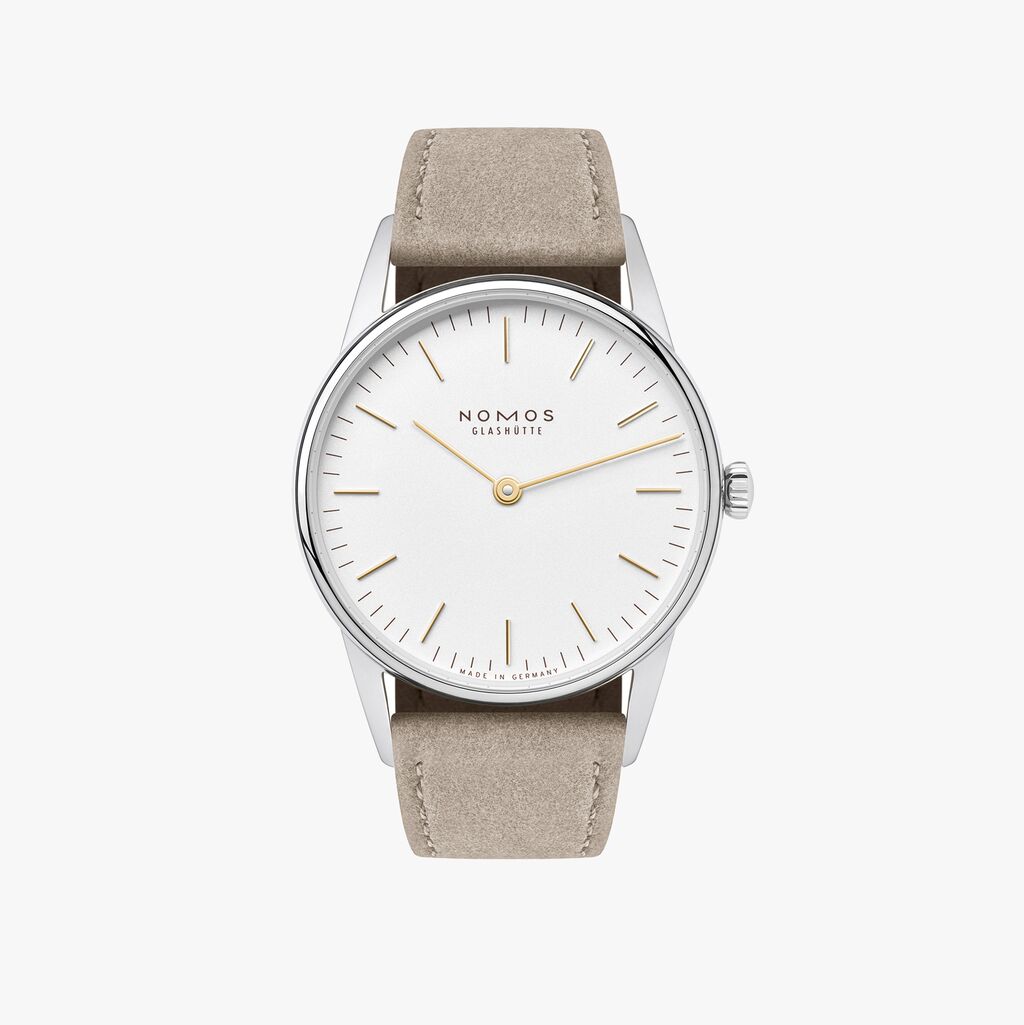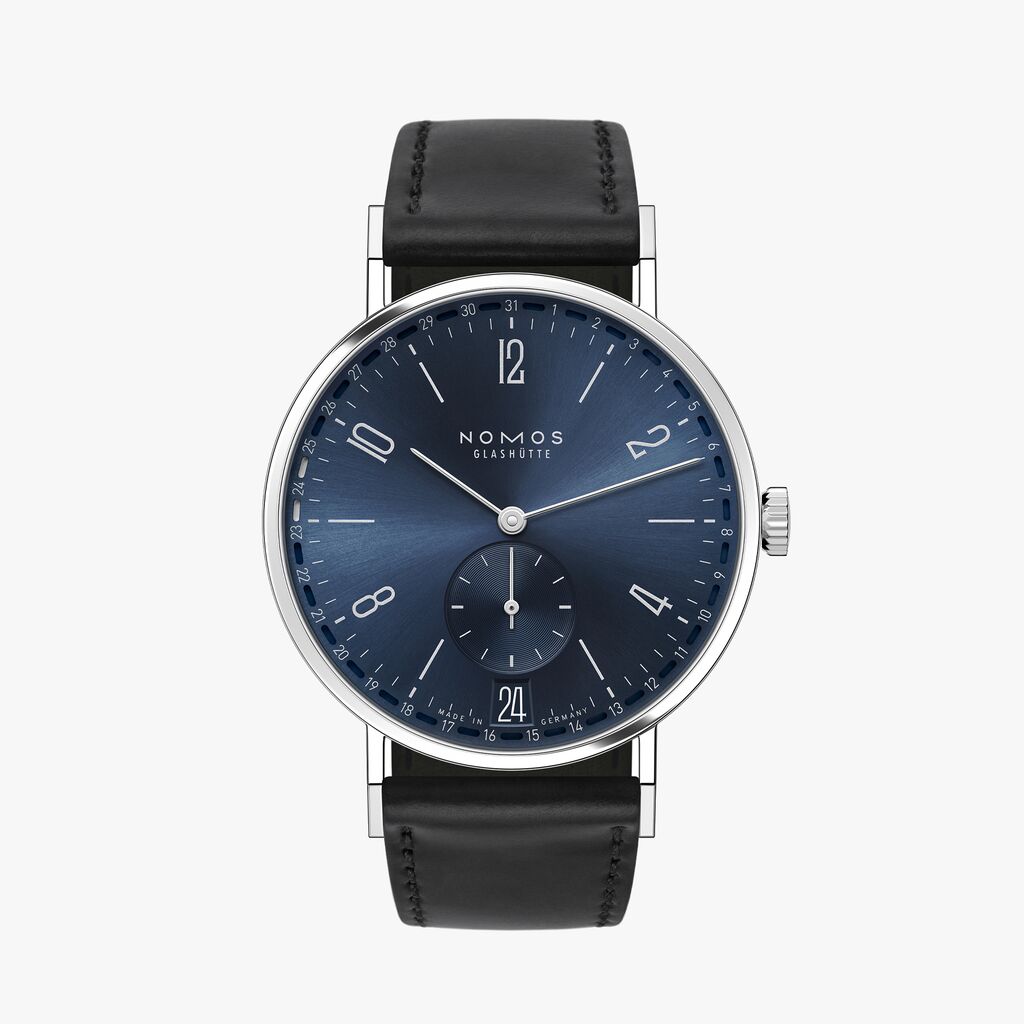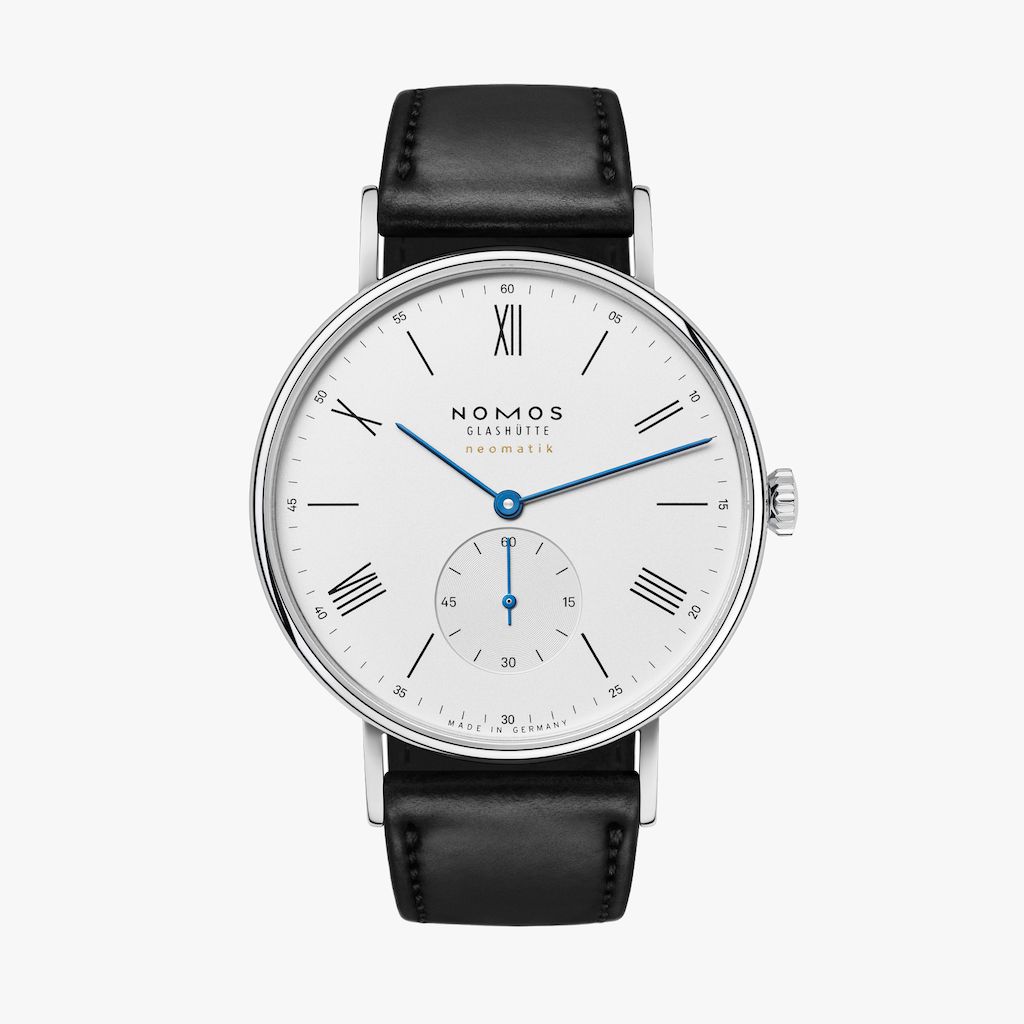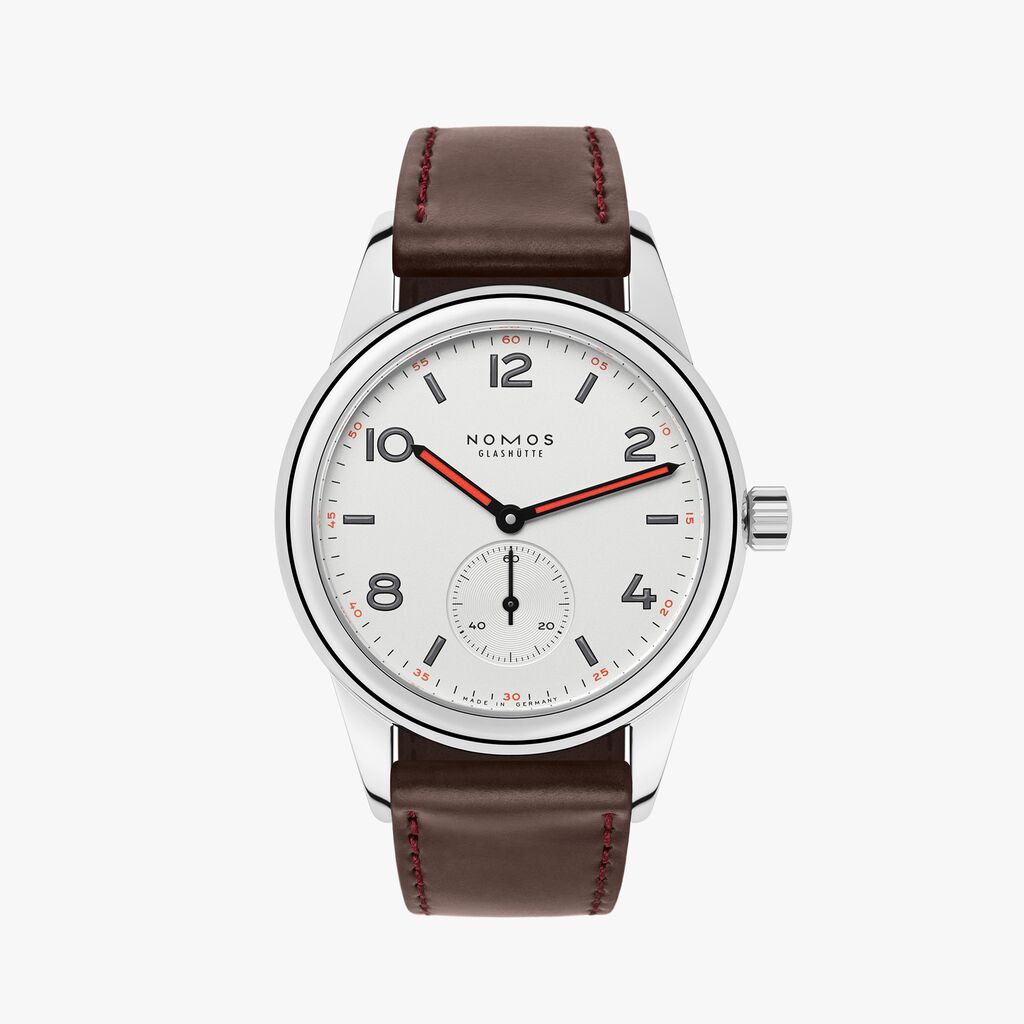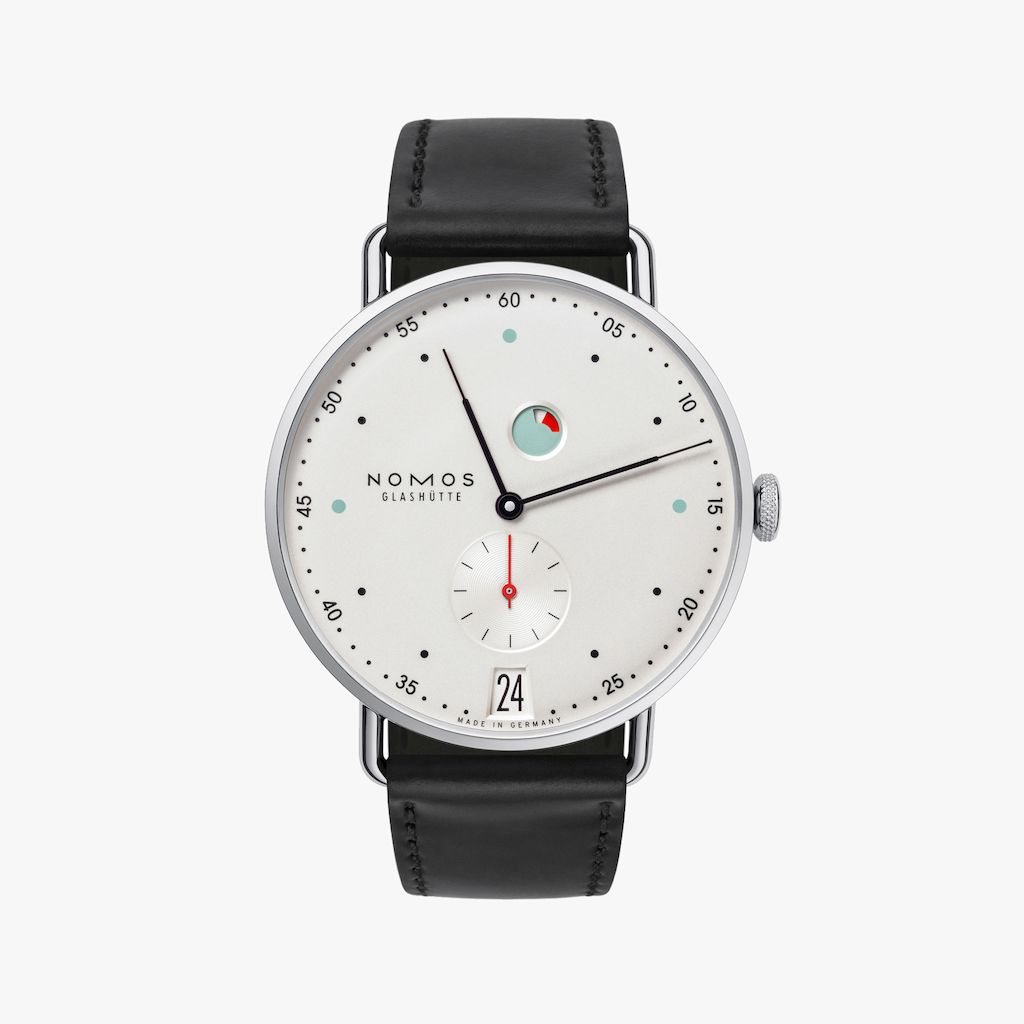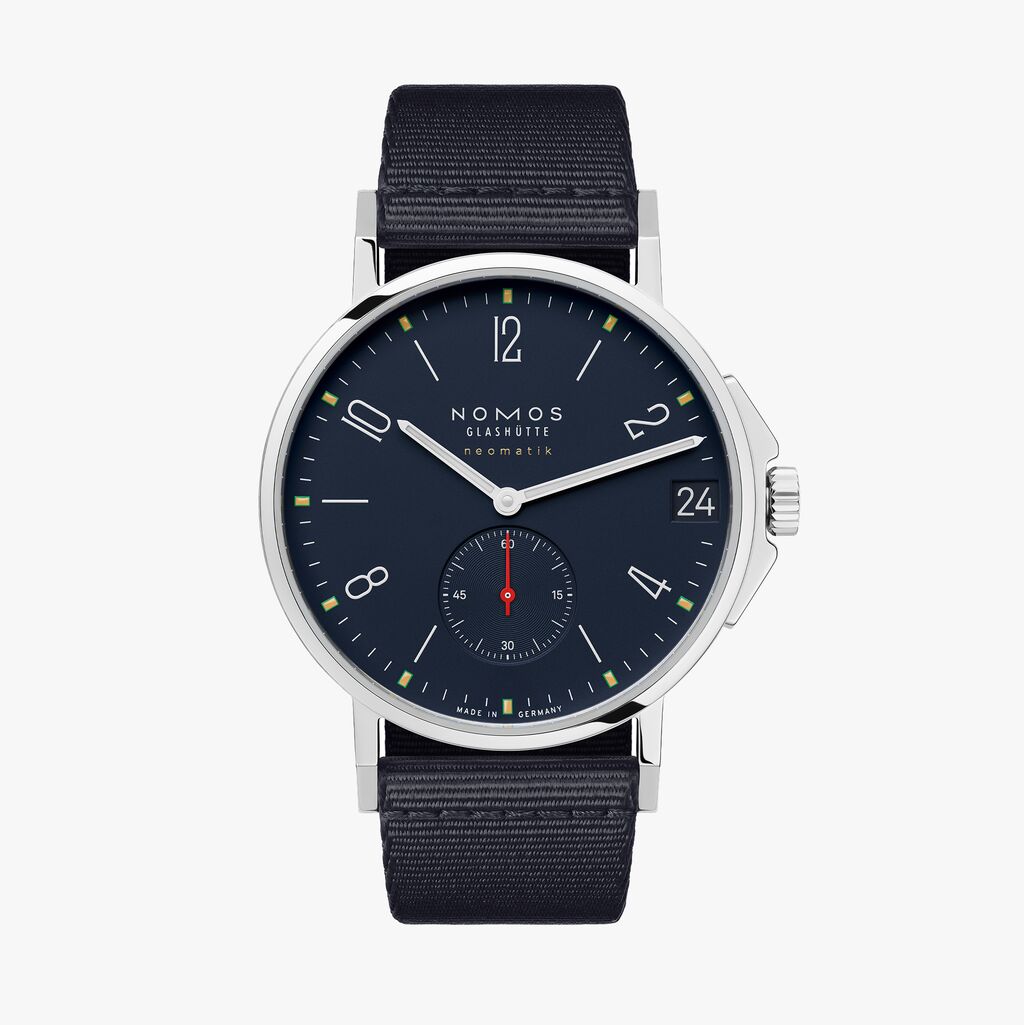Watchfinder: find the perfect mechanical watch for you
What is a mechanical watch?
A mechanical watch, either hand-wound or automatic, is powered by a clockwork mechanism. The mechanical movement within—comprised of cog wheels, springs, pinions, and other components—move hands around the watch’s dial to display the time. Mechanical watches are powered by the energy stored in the mainspring, which is released slowly to move the hands. This energy is generated by regular winding by hand via the crown or automatic winding by a rotor as part of a self-winding mechanism.
Functionality
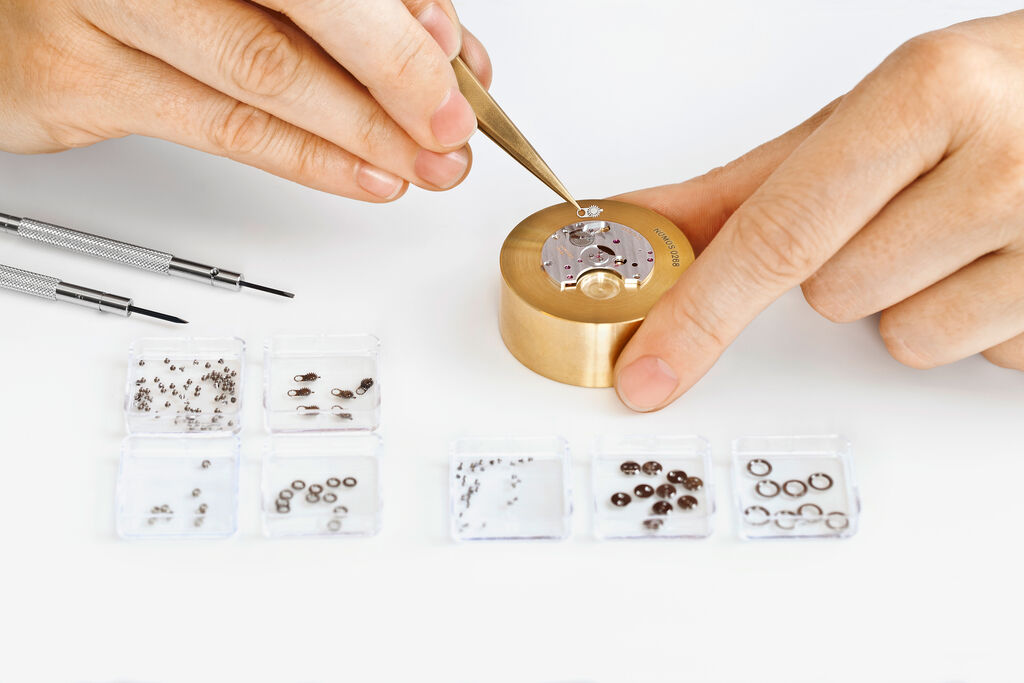
How do mechanical watches work?
All mechanical watches work the same way—namely the energy stored in the caliber is slowly released to move their hands around the dial. Of course, there is a lot more to it than that. Mechanical watches can be divided into two sub-categories, depending on how the energy gets into the mechanical watch: hand-wound and automatic.
Hand-wound watches require manual winding to function. When the crown is wound, it sets a series of cog wheels (namely the crown wheel and the ratchet wheel) into motion. These transfer energy from the watch’s crown to its mainspring. By contrast, automatic watches are usually wound by being worn on the wrist. They are powered by a mechanical caliber equipped with a winding rotor that takes part of the winding. The rotor is a weighted part of the caliber, usually placed on top, which generates the energy needed to power the mechanical watch. The motions of the wearer cause the winding rotor to swing back and forth. This energy is first transferred to the mainspring, which winds tight and saves the energy to create a power reserve.
In terms of releasing energy again, the process is the same for both kinds of mechanical watches. The wound mainspring slowly unwinds again, releasing energy to power the timepiece. This is where the escapement comes into play. This essential component controls this release of energy in mechanical watches—and here’s how: The stored energy in the mainspring is transmitted to escape wheel via the gear train. As the balance moves back and forth, the energy is transferred from the escape wheel to the pallet and from there to the balance. In other words, the escapement regulates the release of energy for consistent timekeeping. This is what gives mechanical timepieces their characteristic tick-tock!
What are the main components of a mechanical watch movement?
The main components of a mechanical watch are the base plate, crown, mainspring, gear train, escapement, and balance. In automatic mechanical watches, the winding rotor is another essential component. It takes three years of watchmaking school to learn how to assemble these components and how interact with each other. Here’s the short version:
Energy is generated by winding the crown or by the movements of the winding rotor. This energy is then transferred to the mainspring, where it is stored as a power reserve for the mechanical watch. The energy is released through the gear train and the escapement towards the balance. All these parts are assembled on the base plate—and in Glashütte, a three-quarter plate is placed on top of the movement to cover and protect its intricate mechanism. Other traditional watchmaking regions have their own unique way of finishing mechanical movements. This allows an expert to spot where a mechanical caliber was crafted based on these unique characteristics.
What complications can mechanical watches have?
Complications in mechanical watchmaking refer to the additional functions that a timepiece can have—above and beyond its main task of telling the time. These can be astronomical, such as moon phases or a perpetual calendar; they can be sounds, such as chimes or repeaters set to ring at regular intervals; or they can be additional timing features, such as a second time zone or a chronograph. At NOMOS Glashütte, our watches come with the following complications: power reserve indicator, date, and world time function.
Mechanical, automatic, quartz or smartwatches – what’s the difference?
In short: the movement within and how it works. Mechanical watches are powered by clockwork mechanisms, some of which are automatic. These automatic mechanical watches wind themselves with a rotor, which moves when the watch is worn on the wrist. By contrast, quartz watches have battery-powered quartz movements. And finally, smartwatches are purely electronic devices, often synched to a smartphone. These also have batteries to store energy but usually require regular recharging from an external power source.
Can you overwind a mechanical watch?
It’s rare, but it is possible. Hand-wound mechanical watches are powered by winding the crown—as the power reserve increases, so does the resistance felt on the crown. When the mainspring is fully wound, a clear point of resistance can be felt. Only extreme force can overcome this resistance on the crown, which would then damage the mainspring. By contrast, automatic mechanical watches do not always feature this clear point of resistance, which puts them at a slightly higher risk of overwinding. That said, there is an easy way to avoid this: Simply give the crown a few twists until the automatic watch is ticking again and then wear it on the wrist to continue winding.
Are mechanical watches waterproof?
Mechanical watches certainly can be waterproof. The case is the decisive factor for how waterproof any watch is. The sealing between the glass and the metal case must be exact—and the crown requires extra attention to ensure that no water can enter through the gap for winding stem. Features such as rubber seals, case screws and screw-down crowns can be used to make a mechanical watch more waterproof. At NOMOS Glashütte, for example, the water resistance of our timepieces ranges from 3 atm to 30 atm. The measurement “atm” stands for atmospheres—or how much pressure the case can safely withstand. The higher this measurement, the more waterproof the mechanical watch is.
Advantages of a mechanical watch
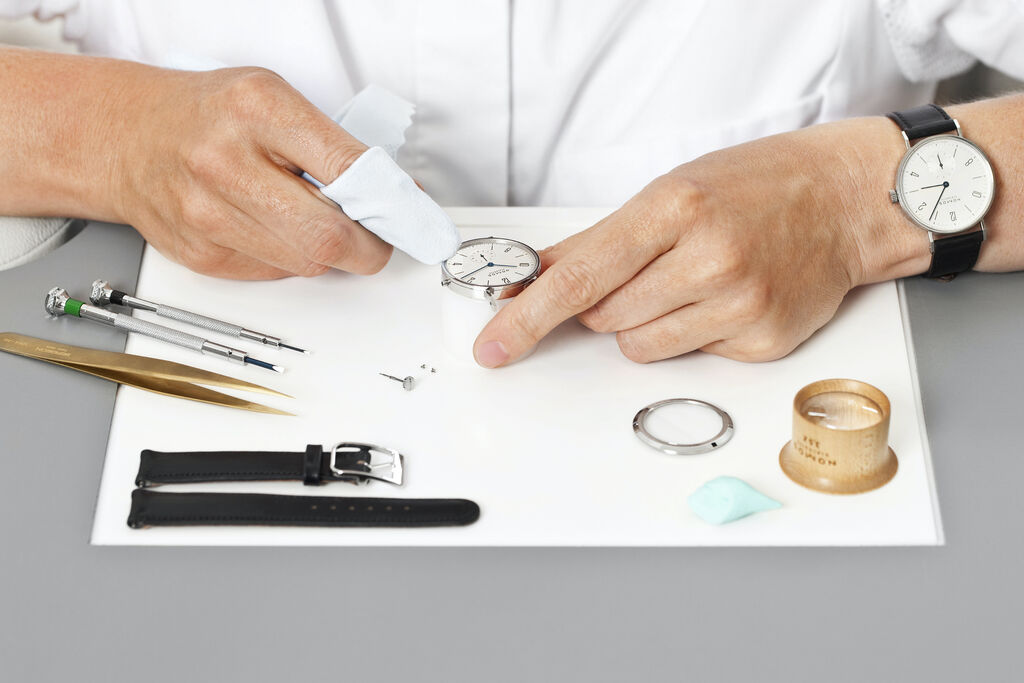
Why choose a mechanical watch?
There are several good reasons why a mechanical watch is an excellent choice. For some watch wearers, it is an appreciation of craftmanship that draw them to this traditional way of timekeeping. For others, a mechanical watch represents an investment in a high-quality product that will last. With many other ways to keep track of time, a watch is no longer a necessity. Therefore, wearing a mechanical watch is more about making a statement about what is important to you. Although they are quite useful too!
Which is better: a quartz watch or a mechanical timepiece?
The short answer is—it depends. Quartz is a relatively cheap material an creates a reliable frequency that leads to accurate timekeeping. Quartz watches tend to be mass produced and are therefore more affordable; however, they often cannot be repaired if they break, meaning they have a limited lifespan. By contrast, a mechanical timepiece usually has a higher price point but will last a lifetime with a little care. This makes them an ideal investment or meaningful gift.
How to find the best mechanical watch for you?
There’s a lot of choice out there and it can be difficult to know where to start. So here are five things you should consider:
- design and functionality
The main function of any watch is to tell the time, so a clear and legible design that is also pleasing to the eye should be considered essential. Furthermore, a mechanical watch is a personal possession designed to last a lifetime. For this reason, it is worth selecting a timepiece that will suit your taste for the years to come. - the movement within
Dial design is important of course, as is the size of the watch relative to your wrist. However, the decisive factor when it comes to the accuracy of a mechanical timepiece is the movement within. A high-quality movement should not lose or gain more than a few seconds a day—which means that your watch can keep you on time. - servicing options
Mechanical watches benefit from regular servicing; ideally every five years at the latest. When considering which watch is best for you, it is worth bearing this in mind. Do you have an official retailer near you to assist? Or an independent watchmaker? Alternatively, many watch manufacturers may allow you to send your mechanical timepiece directly to them for servicing when required. - return on investment
Selecting a mechanical timepiece is an investment—and as such, it is reasonable to consider what sort of return you might expect. Some watch brands or watch models are much more desirable on the resale market than others, for example. Alternatively, a return on investment may mean a timepiece that can be passed onto a future generation, still keeping excellent time after decades of use. - quality of materials
For mechanical watch to last it needs to be crafted from high-quality materials. Surgical-grade stainless steel (316L) or 18kt solid gold are excellent choices for the case—which, after all, is sitting next to your skin for hours on end. Sapphire crystal glass is one of the hardest materials out there, making it the best choice for watch glass to protect the dial underneath. And finally, the strap or bracelet: high-quality leather like the Horween Genuine Shell Cordovan leather straps used at NOMOS, textile or stainless steel should keep your mechanical watch safely on the wrist, where it belongs.
When it comes to a mechanical watch, the dial is often the very first part that you notice; there’s a reason it’s also known as the “face” of a timepiece. As such, the design of this essential part is decisive for the overall appeal. The typography, hands, and additional complications all have their role to play here. But the very first thing that is likely to catch your attention is the color. When it comes to this aspect, there are a myriad of opinions and preferences. We’ve answered some of the most frequently asked questions about dial colors here.
Accuracy

How accurate are mechanical watches?
Both types of mechanical watches (hand-wound and automatic watches) always exhibit an element of tolerance as far as accuracy is concerned. This depends on the way a timepiece is worn, for example. Variations in temperature and air pressure, minor jolts and irregular winding can also have an influence.
Mechanical watches from NOMOS Glashütte achieve an accuracy of less than ten seconds deviation per day. To ensure this, we regulate our mechanical calibers in six positions over the span of seven days. NOMOS Glashütte watches must achieve the best results in all dial and crown positions.
What makes a mechanical watch accurate?
The accuracy of a mechanical watch is largely determined by the precision of its caliber—specifically the pace-setting part, known as the escapement. That is why we at NOMOS Glashütte ensure that all our timepieces are powered by an in-house developed and built escapement. Known at the NOMOS swing system, this component allows us to ensure the excellent timekeeping of our mechanical watches, independent of third-party suppliers. Furthermore, we adjust our mechanical calibers so precisely that the movements achieve the same accuracy in our in-house tests as chronometer-tested watches. Mechanical from NOMOS Glashütte watches must achieve excellent results before being sent out into the world.
Longevity
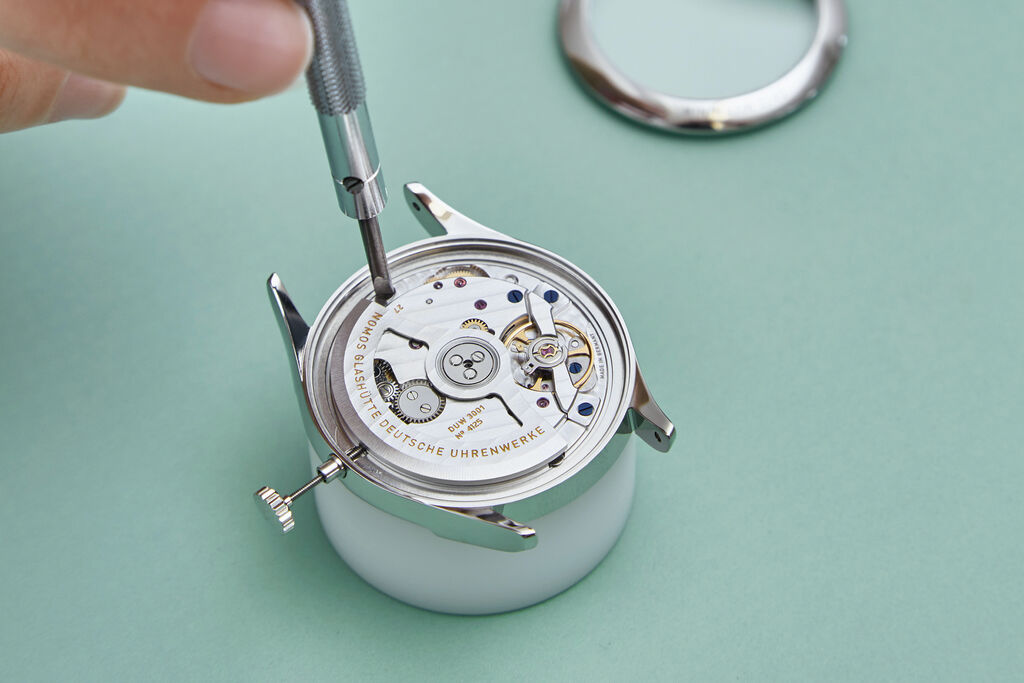
Do mechanical watches hold their value?
Many factors influence whether a watch holds its value on the resell market—the quality of materials used, the craftmanship of its production, and the aesthetic appeal of its design, to name just a few. High-quality materials, expert craftmanship and award-winning design come as standard at NOMOS Glashütte, which is why all our timepieces (hand-wound watches and automatic watches) retain their value for the years to come. Our limited editions are particularly popular, and often gain in value over time.
How often should mechanical watches be serviced?
Every mechanical watch needs regular maintenance to ensure optimal function. After five years at the latest, a complete revision should be carried out by a watchmaker. After this time, it is quite possible that the lubrication may have evaporated. Where metal rubs against metal, wear and tear can be the result. At NOMOS Glashütte, our watchmakers carry out the following tasks: a complete disassembly of the watch, ultrasonic cleansing of all components in special cleaning fluids, exchange of worn parts, reassembly of the caliber, fine timing check and, if necessary, correction of all functions, adjustment in six positions, complete refurbishment of the case in several steps, replacement of the crown, winding stem, gaskets, and case tube if required, restoration of waterproofing, and a final check lasting several days. We also recommend having your watch checked once a year for water resistance—sealing rings are made from rubber and could deteriorate under extreme heat, for example.
Can mechanical watches be repaired?
Every single part of a mechanical watch can be repaired. This means that they are one of the most sustainable products out there, since a well-cared for mechanical watch will keep working for a lifetime or more. By contrast, the electronics in a smartwatch or a quartz watch can often not be repaired—meaning if these types of watches break, they simply need to be replaced.
How do I take care of a mechanical watch?
Here are a few tips to keep a mechanical timepiece in perfect working order:
- avoid external impacts and exposure to strong magnetic fields
Magnetic fields can affect all mechanical watches, so it is best to avoid them when possible. As the mechanical movement within comprises of many moving metal parts, magnetism will stop the watch keeping good time. - check the water resistance
Since not all mechanical watches are particularly waterproof, it’s worth checking before getting them wet. If your mechanical watch has a water resistance of 20-30 atm, you can go diving with it. The description 10 atm reveals that your watch is suitable for swimming and snorkeling; 5 atm means that you can shower with your watch on. If you can’t find this information, please assume your mechanical watch is waterproof to 3 atm and should be kept dry.
Pro tip: We recommend having the water resistance of any mechanical watch checked once a year by a watchmaker. It only takes a moment, as there’s a machine designed for specifically this purpose. - don’t drop it!
This seems obvious and it is. Most mechanical watches will have high-quality cases made from stainless steel or gold. That said, a drop or a knock could still affect the mechanical mechanism within—not to mention leave a mark on the case itself. Even if this should happen, however, a trained watchmaker can refurbish a mechanical watch and ensure it is back ticking on the wrist. - store your watch safely when not in use
- pro tip for hand-wound watches
It’s better to take your watch off the wrist before winding it! Stop winding once you reach a point of clear resistance. - pro tip for automatic watches
Be minimal with manual winding: a few turns on the crown should be enough, the rotor does the rest. Don’t use the crown or pushes while in water.
Mechanical Watches from NOMOS Glashütte
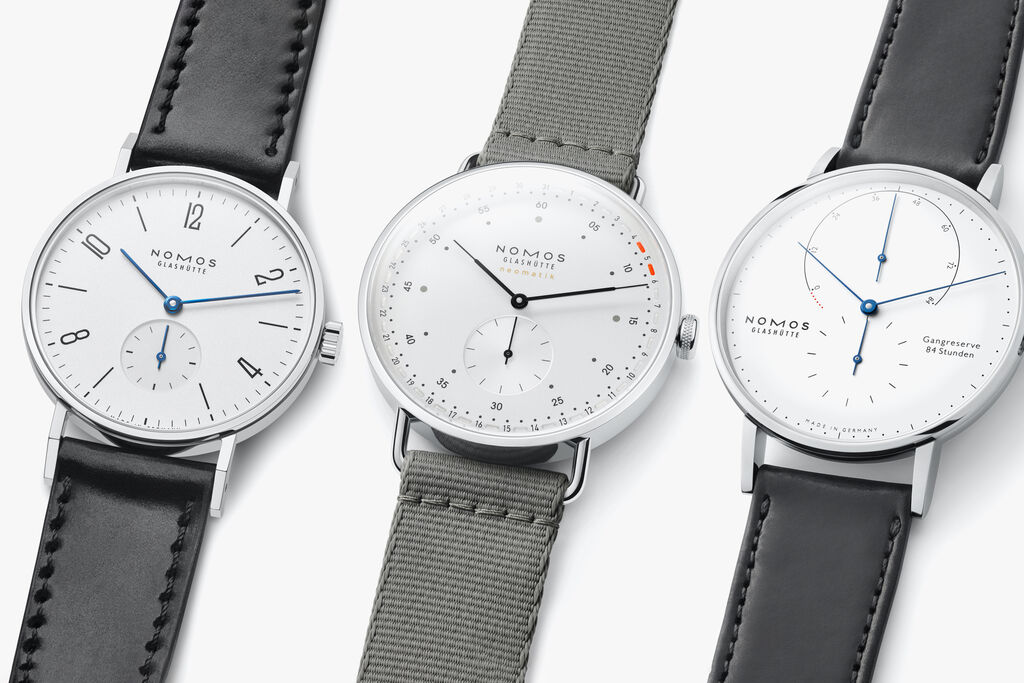
Where are NOMOS watches made?
NOMOS watches are crafted in Glashütte, Germany. Drawing on over 175 years of watchmaking heritage and tradition, each timepiece is carefully produced by experts in their field. We are proud to be an independent manufactory that produces its own mechanical calibers in-house. In fact, a watch can only bear the title of “Glashütte” on its dial if at least 50% of its value is created in this historic watchmaking town. At NOMOS Glashütte, this number goes up to 95%.
Learn more about Glashütte watchmaking.
How are mechanical watches made at NOMOS Glashütte?
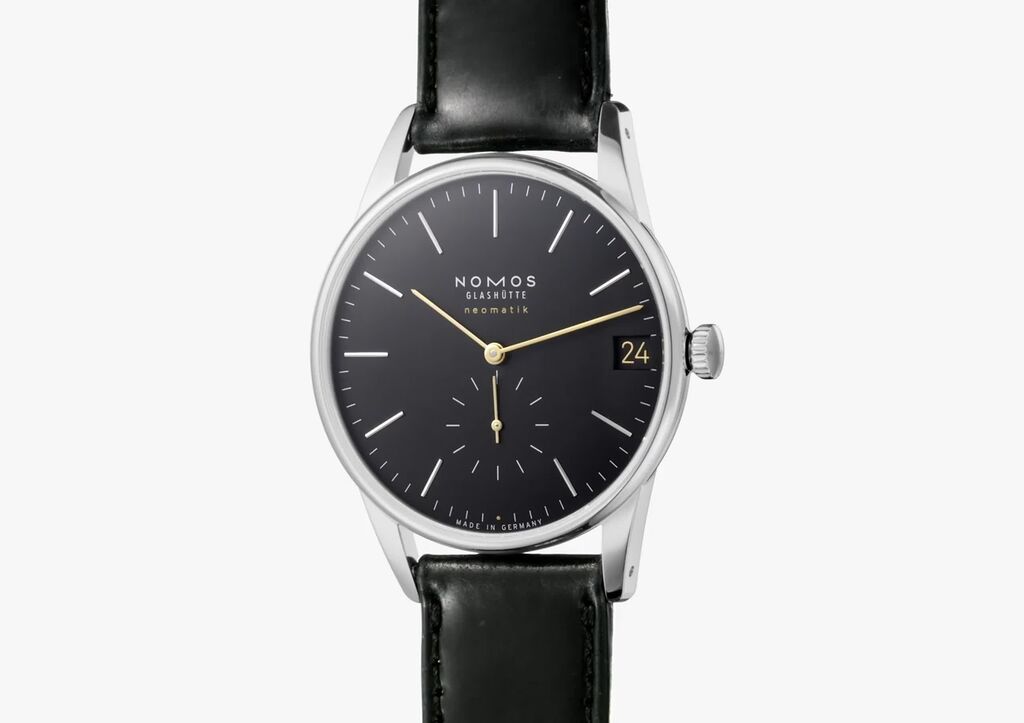
We do as much as possible in-house, with up to 95% of our watch calibers’ value produced by NOMOS in Glashütte. And when we say in-house, we mean that everything from the dial design to mechanical innovation in the calibers and, of course, the watchmaking itself takes place within the company. This applies to our hand-wound and automatic watches. This strategy has several advantages—including keeping our supply chains short and our carbon footprint as small as we can make it. The result? Fine timepieces made to last a lifetime from carefully sourced, high-quality materials.
The following characteristics are typical of watches made in Glashütte:
- The three-quarter plate, the barrel, and the gear train culminating in the escape wheel: a particularly robust and particularly beautiful construction with a good 150 years’ worth of tradition behind it.
- The Glashütte stopwork, a part of the winding mechanism. Unlike Swiss-made winding mechanisms, its jumper spring is long and curved.
- The most elegant form of rate accuracy: the swan neck fine adjustment.
- Tempered blue screws. They get their corn flower blue color during the heating process—the steel is baked at over 290 degrees Celsius (almost 570 Fahrenheit). This also protects them from corrosion.
- One-of-a-kind touches: perlage, ribbing, and sunburst decoration.
A brief history of mechanical timekeeping
The passing of time is an experience shared by every conscious form of life. It represents an awareness that things change. Observing the sky is also elementary. As early as the Stone Age, constellations were recorded in cave paintings alongside hunting scenes. Sidereal time based on the movement of the stars was used to track the course of the year, while the time of day could be measured using the phases of the sun and moon. Sundials based on shadow sticks are among the earliest timepieces created around 5000 years ago. These ancient communities were satisfied with marking the most important recurring moments of the year, such as the equinoxes, for farming and religious purposes. For this purpose, huge circles of stones or poles were erected; Stonehenge is perhaps the most famous example.
The organizational needs of more complex societies around 3000 BC — such as the Sumerians, Egyptians, or Chinese dynasties — made a more precise division of the day into hours necessary. The principle of pouring water in regular intervals became popular as a way of measuring time, which worked even when the sky was overcast. Later, in the second century BC, the first mechanical clock with a water-powered gear train was created in Greece. In medieval Europe, craftsmen developed gear clocks with weight drives, verge escapements and balance beams. First in church towers, then in a portable form at the beginning of the 16th century. During this time, the minute hand was added to the single hour hand that had previously been the norm. Another 100 years later, the pendulum clock was patented — and the balance spring was invented, which made it possible to construct pocket watches.
The development of precise mechanical watches was not only promoted by a technical fascination with time, but also by the real-life benefits of precision timekeeping. Marine chronometers were fundamental to European seafaring in the 18th century. With the introduction of the railway as a mode of mass transportation from the 1830s onwards, punctuality suddenly became important for the whole population.
With the exception of a few decorative clasps for women, pocket watches were the main type of mechanical timepiece until the beginning of the 20th century. Mechanical watches for the wrist, or wristwatches as we know them today, were only developed and popularized after World War One with the increasing use of the automobile. After all, when you're behind the wheel, it can be difficult to pull a watch out of your pocket.
In addition to the Swiss production of mechanical watches, there were two important centers of watch manufacturing in Germany from the end of the 19th century. These were located in the Black Forest and in Glashütte, and both survived the division of Germany shortly after World War Two. However, the introduction of battery-powered quartz watches at the end of the 1960s plunged the entire mechanical watch industry into a crisis. Research on frequency technology had been carried out worldwide since the 1920s, and in the 1950s, the first quartz movement for portable watches was created in Switzerland. However, it was Japanese companies that started to mass produce quartz watches and dominated the market for a few years.
Today there are many types of watches. Quartz watches, smartwatches — and mechanical watches as well. For many customers, there is ultimately no alternative to their quality craftsmanship, design, and sustainability. In an increasingly digitized world, a mechanical watch remains an expression of traditional values and is an investment that lasts.


